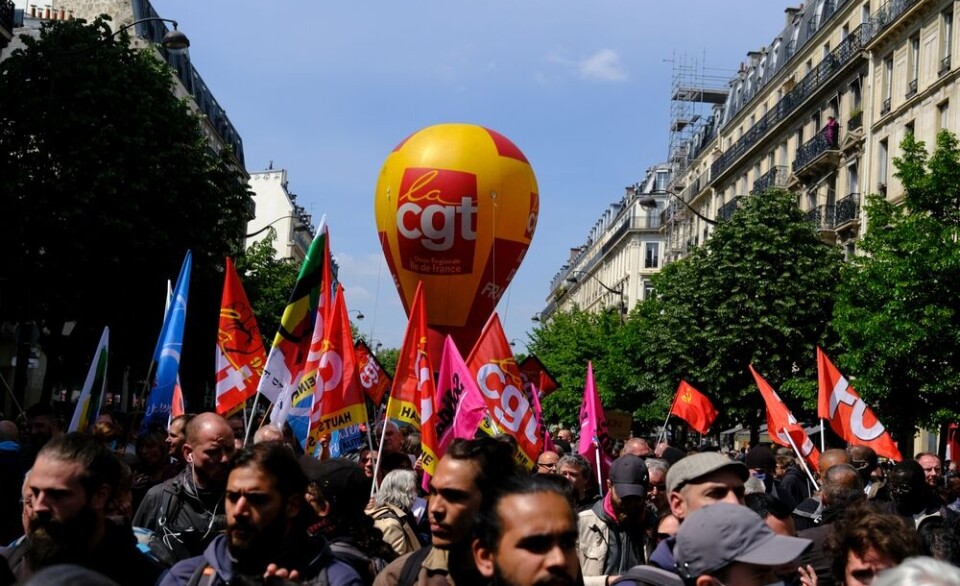-
UK-EU talks raise hopes of easing post-Brexit rules for Britons in France
Several proposals and plans could ease some post-Brexit complications
-
French study claims ‘Dry January’ participation improves sleep and health
First major study of its kind in France praises challenge, but alcohol-free month is yet to receive official endorsement
-
Egg shortages continue in France after bird flu and weather chaos
Sales rose by 300 million eggs between 2024 and 2025 as producers struggle to meet demand
French motorway art: Look out for the giant boar
Some love it, some hate it, some don’t even notice it, and French motorways are full of it. Motorway art, that is - sculptures on the side of the road across the country.

If you happen to be passing on the A10, you might see one called ‘Cathedral Arches’ (‘Flèches des Cathédrales’); ‘Cathar Knights’ (‘Les Chevaliers Cathares’) on the A61, or indeed the charismatic ‘Giant Boar Woinic’ ('Sanglier Géant') on the A34.
They are prevalent in France especially, due to a law in the 1980s and 1990s that said 1% of the cost of any significant infrastructure project - such as a motorway - needed to be spent on public art.
The law became known as the "artistic 1%".
Nowadays, there are around 75 such pieces of art across France’s motorway network, and as much as people sometimes ignore them, they often have significant cultural meaning, using symbols of the local area, or famous characteristics of the nearby town, for inspiration.
Sculptor Georges Saulterre's ‘Cathedral Arches’ even won a Guinness World Record as the 'tallest sculpture made by man'. Saulterre is also the creator of a number of other pieces, such as the ‘Vikings’ on the Paris-Normandie motorway, and the ‘At The Dawn of Time’ (‘A l’Aube Des Temps’), which is next to the péage d’Antibes and intended to symbolise the gateway to the Côte d’Azur.
Other local symbols used in motorway art include the Poulet de Bresse, by Jean Brisé, which is found in the rest area of the same name, on the A39, and is a proud sign of one of the area's most well-known products (Bresse chickens are prized by chefs for their quality).
And yet, motorway art provokes debate, because some claim that, rather than being awe-inspiring, it is actually necessarily uninteresting, so as not to distract drivers too much from the roads.
The sculptures must also be made of heavy, weather-resistant materials, and usually include rather obvious symbols of the area, such as the ‘giant boar’, known as ‘Woinic’, who represents a huge and stylised version of the Ardennes animal motto.
In French, the term "art autoroutier" is sometimes seen as a pejorative term.
“[Motorway art] is nearly always anodyne,” admits Cinzia Pasquali, creator of ‘The allegory of the Chateau de Versailles’ sculpture on the A86, speaking to the Nouvel Obs website.
Nouvel Obs itself calls the art unlikely to “provoke enthusiasm”, and calls Woinic the boar “nightmarish”.
Decide for yourself if you happen to pass by any of these*:
Woinic, by Eric Sléziak
Eight metres high, weighing 50 tonnes, and taking 11 years to build, the porky piece was placed on the A34 in 2008. Speaking to the Nouvel Obs, art historian Thomas Schlesser has called it a ‘terrible mediocrity’ of animal art - yet its popularity means it has its own visitors' centre and is seen by some as a source of pride in the Ardennes.
The Cathedral Arches
These 21-metre high shards on the A10, just before Dourdan, were created in 1989, by Georges Saulterre. Some critics have welcomed it as influenced by the expressionism movement of the 20th century, but others have dismissed it as unknown and unimportant.
The Francilienne
This bronze, four-metre high sculpture by Alex Garcia, of a girl leaving with a suitcase, appeared on the A6 near Lisses in 1992. Despite her charm, she and others like her (in Lésigny, Seine-et-Marne, Cergy-Pontoise and in Val’D’Oise) met an abrupt end when thieves stole her in 2010, possibly to sell on the high-value bronze.
Ceramic
A ceramic square on the A6 near the Fleury en Bière exit, by Alain Girard, in a rather abstract style inspired by the paintings of Djoka Ivackovic, bought in 1990. A rather controversial piece, which many drivers seem to assume is an old signpost or billboard, according to those asked by the Nouvel Obs.
The Bresse Chicken
At 20 metres high and 32 metres in diameter, the metal Poulet de Bresse on the A39 near Dommartin-lès-Cuiseaux claims to be the "world's largest chicken", and is a symbol of the popular Bresse chicken from the area. Created by Jean Brisé, it was installed in 1999.
The Sundial
Found on the A9, this 1993 work is found near Tavel in the Gard. In the form of a huge sundial, it was a collaboration between sculptor Odile Mir, astronomer Denis Savoie, and the engineer Robert Queudot. In theory, it does actually tell the time.
La Tour de France dans les Pyrénées
It's one of France and the world's most popular cycling competitions, so it's perhaps no surprise that there is a sculpture in honour of it on the A64, near Ger at the Aire des Pyrénées. It was created by Jean-Bernard Métais, and measures 18 metres high and 30 metres across.
The Cathar Knights
Created by Jean Tissinier in 1978, the 13-metre-high stones sit on the A61 between Narbonne and Carcassonne. Intended to appear geometric and monumental, Schlesser criticised them for their dullness and, some argue, similarity to burkas.
(*With thanks to this Nouvel Obs website story for its information on five of these pieces).
Stay informed:
Sign up to our free weekly e-newsletter
Subscribe to access all our online articles and receive our printed monthly newspaper The Connexion at your home. News analysis, features and practical help for English-speakers in France
























